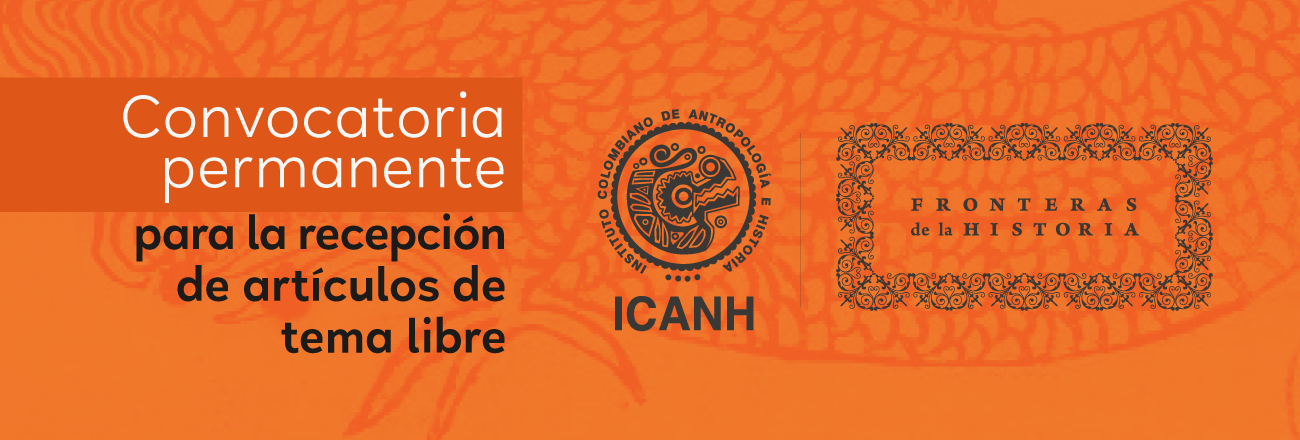Penal policies, prison, and gender: Contemporary feminist debates and intersecting perspectives from different latitudes
Abstract
The prison has been understood as the modern institution par excellence for the exercise of penal social control, a place where several prohibited violences are allowed and where others, widely normalized, such as gender violence, are relocated in their own terms. In recent years, feminism has vigorously questioned the possibility that criminal-penal justice and the prison institution can not only reproduce, but also to struggle against phenomena of violence - a debate that has given rise to two dichotomized lines known as ‘carceral feminism’ and anti-carceral or abolitionist feminism. In this article, we intend to relocate this debate and to provide some critical contributions that allow the overcoming of this dichotomy. If, on the one hand, we oppose to the punitive feminist turn and to the hypostasis of feminist claims translated into justice policies; on the other hand, we also do not seek the idealization of the action ‘beyond the penitentiary’ or the recognition of an intrinsically radical character to justice processes made ‘on the margins’ of formal institutions, including the prison. For this purpose, we will rely on theoretical explorations and recent observations from Latin America and the Iberian Peninsula. Finally, the implications of this spectrum of definition of criminal-penal and community policies will be considered.
Downloads
References
Ávila, R. S., Salgado, J. y Valladares, L. (2009, eds.): El género en el derecho: Ensayos crítico, Ministerio de Justicia y Derechos Humanos/Naciones Unidas/UNIFEM.
Baldez, L. (2008): «Coalition politics and the limits of State Feminism in Chile», Women & Politics, 22 (4), pp. 1-28.
Ballesteros-Pena, A. (2020): «The Prison Trajectories of Foreign National Women in Spain: Intersections of Gender, Race, Citizenship, and Social Class», Critical Criminology, 28(2), 243-258.
Ballesteros-Pena, A. y Bustelo, M. (2023): «Gender equality in prison reform in Spain: A gender-biased, closed policy system prevents real change», European journal of politics and gender, 6 (1), pp. 23-39.
Ballesteros-Pena, A., Bustelo, M. y Mazur, A. (aceptado para publicación, eds): Gender and the coercive state: Feminist penalty policy across the globe.
Ballesteros-Pena, A. y Samaranch. E. (2015): «Políticas de igualdad en las cárceles del siglo XXI: Avances, retrocesos y retos en la práctica del encarcelamiento femenino», Praxis sociológica, 19, pp. 161-186.
Beauvoir, S. (2015 [1949]): O segundo sexo, Lisboa, Quetzal Editores.
Bernstein, E. (2007): «Sexual politics of the ‘new abolitionism’», Differences: A journal of feminist cultural studies, 18(3), pp. 128-151.
Caffarena, B. M., Moreno, M. H., & Stock, B. S. (2013): «La exclusión de las excluidas. ¿Atiende el sistema penitenciario a las necesidades de género? Una visión andaluza», Estudios penales y criminológicos, XXXIII, pp. 59-95.
Carlen, P. (1983): Women’s imprisonment: A study in social control, Boston, Routledge & Kegan Paul.
Chesney-Lind, M y Pasko, L. (2013): The female offender: Girls, women, and crime, Londres, Sage.
Coba, L. (2015): Sitiadas: La criminalización de las pobres en Ecuador durante el neoliberalismo, Quito, FLACSO.
Correas, O. (1982): Introducción a la crítica del derecho moderno:(esbozo), México, Universidad Autónoma de Puebla.
Crenshaw, K. (2006): «Raza, reforma y reducción: Transformación y legitimación en el derecho contra la discriminación», en M. Villegas, I. Sierra y E. Saldarriaga, eds., Crítica jurídica: Teoría y sociología jurídica en los Estados Unidos, Bogotá, Editorial UNAL, pp. 97-124.
Cunha, M. I. (2005): «From neighborhood to prison: Women and the war on drugs in Portugal», en J. Sudbury, ed., Global lockdown: Race, gender, and the prison-industrial complex, Londres, Routledge, pp. 155-166.
Foucault, M. (2022): Alternativas à prisão: Michel Foucault: um encontro com Jean-Paul Brodeur, Petrópolis, Editora Vozes.
Fraser, N. (2011): «¿De la redistribución al reconocimiento? Dilemas de la justicia en la era ´postsocialista’», New left review, pp. 126-155.
Freedman, L. (2018): «A ‘beautiful half hour of being a mere woman’: The feminist subject and temporary solidarity», Historical Materialism, 26(2), pp. 221-241.
Daly, K. (2016): «What is restorative justice? Fresh answers to a vexed question», Victims & Offenders, 11, pp. 9-299.
Davis, A. (2016): Mulheres, raça e classe, São Paulo, Boitempo.
Davis, A. (2022): As prisões estão obsoletas? Lisboa, Antígona
Duarte, M. (2023): O papel do Direito e dos tribunais na violência contra as mulheres, Porto, Edições Afrontamento.
Evans, K. (2019): Gender responsive justice: A critical appraisal, London, Taylor & Francis Ltd.
Garland, D. (2008): A Cultura do controle: Crime e ordem social na sociedade contemporânea, Rio de Janeiro, Editora Revan.
Habermas, J. (1995): Problemas de legitimación en el capitalismo tardío, Buenos Aires, Amorrortu editores.
Heidensohn, F. (1996): Women and crime, Londres, Macmillan Press Ltd.
Hernández, R. A. (2013): «Del Estado multicultural al Estado penal: Mujeres indígenas presas y criminalización de la pobreza», en R. A. Hernández, R. Sieder, M. T. Sierra, eds., Justicias indígenas y Estado: Violencias contemporáneas, México, FLACSO, pp. 299-338.
Hodgson, J. (2022): Gender, Power and Restorative Justice: A Feminist Critique. Londres, Palgrave Macmillan.
Kim, M. (2019): «Anti-carceral feminism: The contradictions of progress and the possibilities of counter-hegemonic struggle», Affilia: Journal of Women and Social Work, 35 (3), 309-326.
Knopp, F. (1994): «On radical feminism and abolition», Peace review: A journal of social justice, 6 (2), pp. 203-208.
Kupers, T. (2017): «Gender and domination in prison», Western New England Law Review, 39 (3), pp. 427-447.
Lagarde, M. (2005): Los cautiverios de las mujeres: Madreposas, monjas, putas, presas y locas, Ciudad de México, Universidad Nacional Autónoma de México.
Lagarde, M. (2006): «Introdución», en D. Russell y R. Harmes, eds., Feminicidio: Una perspectiva global, Ciudad de México, Universidad Nacional Autónoma de México, pp. 15-42.
Laurrari, E. (2009): «La Economia Política del Castigo», Mientras Tanto, 110/111, pp. 113-135.
Laurrari, E. (2018): Criminología crítica y violencia de género, Madrid, Ediciones Trotta.
Lea, J. (2010): «Left realism, community, and state-building», Crime, law, and social change, 54, pp. 141-158.
Lerner, G. (2019): La Creación de la Consciencia Feminista, Barcelona, Katakrak.
Logan, A. (2008): Feminism and criminal justice: A historical perspective, New York, Palgrave Macmillan.
MacKinnon, C. (2016): «Feminismo, marxismo, método e o Estado: Uma agenda para teoria», Direito & Práxis, 15 (7), pp. 798-837.
Masson, A. (2019): «A critique of anti-carceral feminism», Journal of International Women’s Studies, 21(3), pp. 64-76.
Matos, R. (2008): Vidas raras de mulheres comuns. Percursos de vida, significações do crime e construção da identidade em jovens reclusas, Coimbra, Almedina.
Matos, R. (2016): «Trajectories and identities of foreign national women: Rethinking prison through the lens of gender and citizenship», Criminology and Criminal Justice, 16 (3), pp. 350-365.
Matos, R., Soares, M, Ribeiro, C. y Castro, M. (aceptado para publicación): «Gender, Feminism, and Carceral Policies in Portugal: Assessing Impacts and Challenges», en A. Ballesteros-Pena, M. Bustelo y A. Mazur, eds., Gender and the coercive state: Feminist penality policy across the globe.
McGlynn, C. (2022): «Challenging anti-carceral feminism: Criminalization, justice and continuum thinking», Women's Studies International Forum, 93, pp. 102614.
Molina, D. I. y Pabón, A. P. (2023): «El feminismo jurídico y la desnaturalización de las injusticias socioeconómicas, políticas, identitarias y vitales contra las mujeres», Ciencia Política, 18 (35), pp. 212-233.
Ptacek, J. (Ed.) (2010): Restorative Justice and Violence Against Women, Nova Iorque, Oxford University Press.
Peterson, D. y Panfil, V. (2013, eds.): Handbook of LGBT Communities, Crime, and Justice, New York, Springer.
Rafter, N. H. (2017): Justice: Women, prisons, and social control, New York, Routledge.
Ricciardelli, R., Maier, K. y Hannah-Moffat, K. (2015): «Strategic Masculinities: Vulnerabilities, Risk and the Production of Prison Masculinities», Theoretical Criminology, 19 (4), pp. 491-2015.
Romero, V. (2022): «Convertirse en buenas mujeres: El tratamiento “refeminizador” de las mujeres privadas de la libertad en el penal de Chiconautla», Revista interdisciplinaria de estudios de género de El Colegio de México, 8, pp. 1-39.
Sabo, D., Kupers, T. y London, W. (Eds.) (2001): Prison Masculinities, Philadelphia, Temple University Press.
Samaranch, E. (2002): Corregir y castigar: el ayer y hoy de las cárceles de mujeres, Barcelona, Ediciones Bellaterra.
Samaranch, E., Calvet, C. y Monera, R. M. O. (2022): «Mujeres, cárceles y feminismos», Revista española de investigación criminológica, 20(2), pp. e699.
Segato, R. (2022): Cenas de um pensamento incómodo: Género, cárcere e cultura em uma visada decolonial, Bazar do tempo.
Smart, C. (1989): Feminism and the power of law, Londres, Routledge.
Silva, V. (2022): «As configurações de género nos regimes prisionais e a reprodução da carceralidade», e-cadernos CES [Online], 37. DOI: https://doi.org/10.4000/eces.7232
Soares, M. (2021): «Feminismo à deriva? Sobre disputas reacionárias coetâneas do ideário feminista», Revista Espaço Académico, 21, pp. 79-91.
Soares, M. (2022): «Feminismo e utopia: Coordenadas de uma disputa política (feminismo liberal)», Alice News. Disponible en web: https://alicenews.ces.uc.pt/?lang=1&id=40943 [consulta: 10 de mayo de 2024].
Sudbury, J. (Ed.) (2005): Global lockdown: Race, gender, and the prison-industrial complex, Londres, Routledge.
Tapia Argüello, S. (2023): Derecho y poder: una introducción al pensamiento jurídico crítico sobre el Derecho y los derechos, Ciudad de México, Ubijus Editorial.
Taylor, C. (2018): «Anti-Carceral Feminism and Sexual Assault–A Defense», Social Philosophy Today, 34, pp. 29-49.
Terwiel, A. (2020): «What is Carceral Feminism?», Political Theory, 48 (2), pp. 421-442.
Tucker, S. (2012): «The elephant in the room: The necessity of race and class consciousness», en M. Mauer y K. Epstein, eds. To build a better criminal justice system, The Sentencing Project, pp. 26-28.
Wacquant, L. (2009): Punishing the Poor: The Neoliberal Government of Social Insecurity, Durham, Duke University Press.
Walklate, S. (2004): Gender, Crime and Criminal Justice, Devon, Willan Publishing.
Wollstonecraft, M. (2017): Uma vindicação dos direitos das mulheres, Lisboa, Antígona.
Young, I. M. (1994): «Gender as Seriality: Thinking about Women as a Social Collective», Signs, 19(3), pp. 713-738.
Young, I. M. (2000): La justicia y la política de la diferencia, Madrid, Ediciones Cátedra.
Zaffaroni, E. (2009): «El discurso feminista y el poder punitivo», en R. S. Ávila, J. Salgado, y L. Valladares, El género en el derecho: Ensayos crítico, Ministerio de Justicia y Derechos Humanos/Naciones Unidas/UNIFEM. pp. 321-334.
Copyright (c) 2024 Mónica Soares, Raquel Matos; Sérgio Martin Tapia Argüello

This work is licensed under a Creative Commons Attribution-NonCommercial-ShareAlike 4.0 International License.

Esta obra está bajo licencia internacional Creative Commons Reconocimiento-NoComercial-CompartirIgual 4.0.









_18.09_.00_1.png)


















